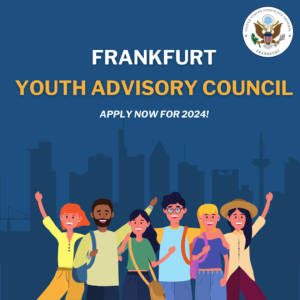When you want to learn something new, it often helps to not only read or hear about it but to also see and experience it in person. This works even better in groups: You can exchange your ideas with each other and benefit from hearing other thoughts and opinions. Thus as the ASA team 2023 of the Black Academy initiative we took a very early train on the 5th of July to travel more than 600 km from Mannheim to Berlin. We were invited to see an exhibition on catchpenny prints in Wustrau and reflect upon the power structures underneath visual storytelling. After a night in Berlin we used the opportunity to visit the landmarks and talk about the history of Germany during sightseeing.
Day 1: Exhibition visit
The special exhibition “Weltbilder – Bilderwelt” at the Brandenburg Preussen Museum in Wustrau presents the history of so-called Bilderbogen (catchpenny prints in English). With the invention of lithography in 1798 these prints soon became very popular for two reasons: They were cheap in production and thus affordable for the wider public. A total of 50 million prints were produced and spread throughout the whole world until the middle of the 20th century. A lot of them originated from the towns of Neuruppin (Prussia), Épinal (Vosges) and Weißenburg (Alsace); the stones used came mostly from Solnhofen (Bavaria). With this printing process it was possible to produce large numbers of prints in a short period of time so it was also used to report and illustrate current events such as catastrophes and sensations, on-goings in the nobility, wars and conflicts. In the exhibition there were examples of a volcanic eruption in Martinique, weddings of royals, the German-French war but also violent disputes in the colonies such as the Boer War in nowadays South Africa or the uprising in Delhi, India.

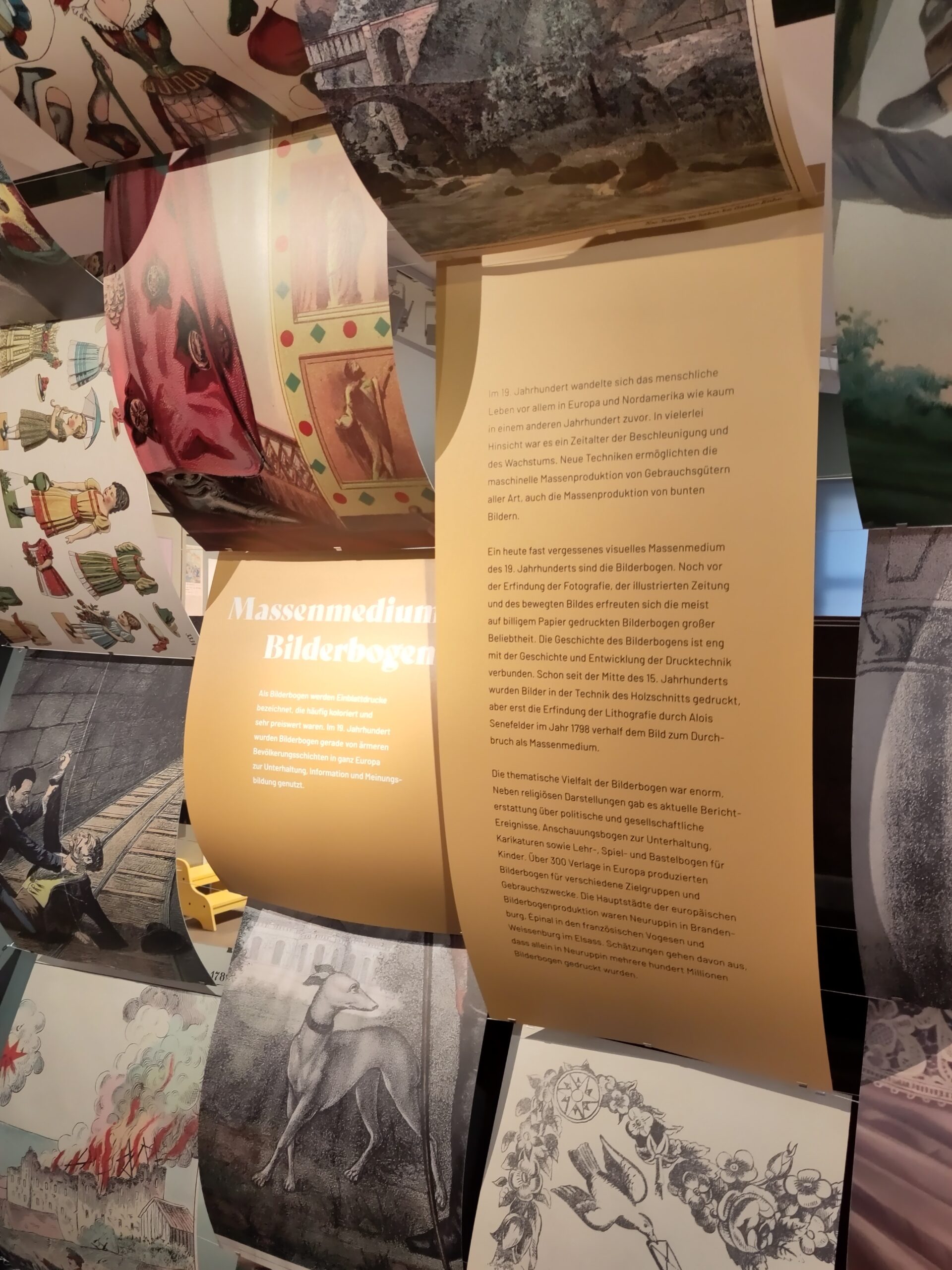
But there was also another side to it: They could easily be used to influence (political) opinions and spread e.g. anti-semitic or racist views. The exhibited examples illustrated the dehumanisation in the illustrations on some of the prints. Because Nicole Amoussou, founder of MeineWelt e. V. in Mannheim and our contact for the ASA team, had helped to create the section on the display of Black people, she offered a space for reflection for us, was able to give us more input on the topic and shared her interpretations. Within the team we discussed the depiction of Black people in the past but also today.
During this reflection we talked about colonial continuities and the power structures that still play a role today when we use images to communicate. Pictures are powerful tools but they are always just one piece of a story, a reduction of reality by someone for someone. What one understands and how one interprets them also depends on whether they are affected by it or not. We talked about emotions and what role they play when we are looking at images. The problem often is that they are simple, minimalistic and do not reflect the complexity of a person or topic. Therefore they are not empowering and sometimes even hypocritic. They victimise and reduce one side to being in need of help from the other. The question is: Who dominates and oppresses, who resists and fights against the dominance?
So what do we do with this input now, which duties derive from it? When we are telling stories today, whether by intention in a conversation with another person or by just sharing a photo on social media, we should always try to see the context of it. The following questions can help us to critically think about the power of pictures and the way they form opinions:
- Which stories are we telling in the first place?
- What images are we using to illustrate our stories?
- Is it clear if we share an opinion or verified facts?
- In what way are we reducing reality?
- Are we sensitive about the reproduction of power structures?
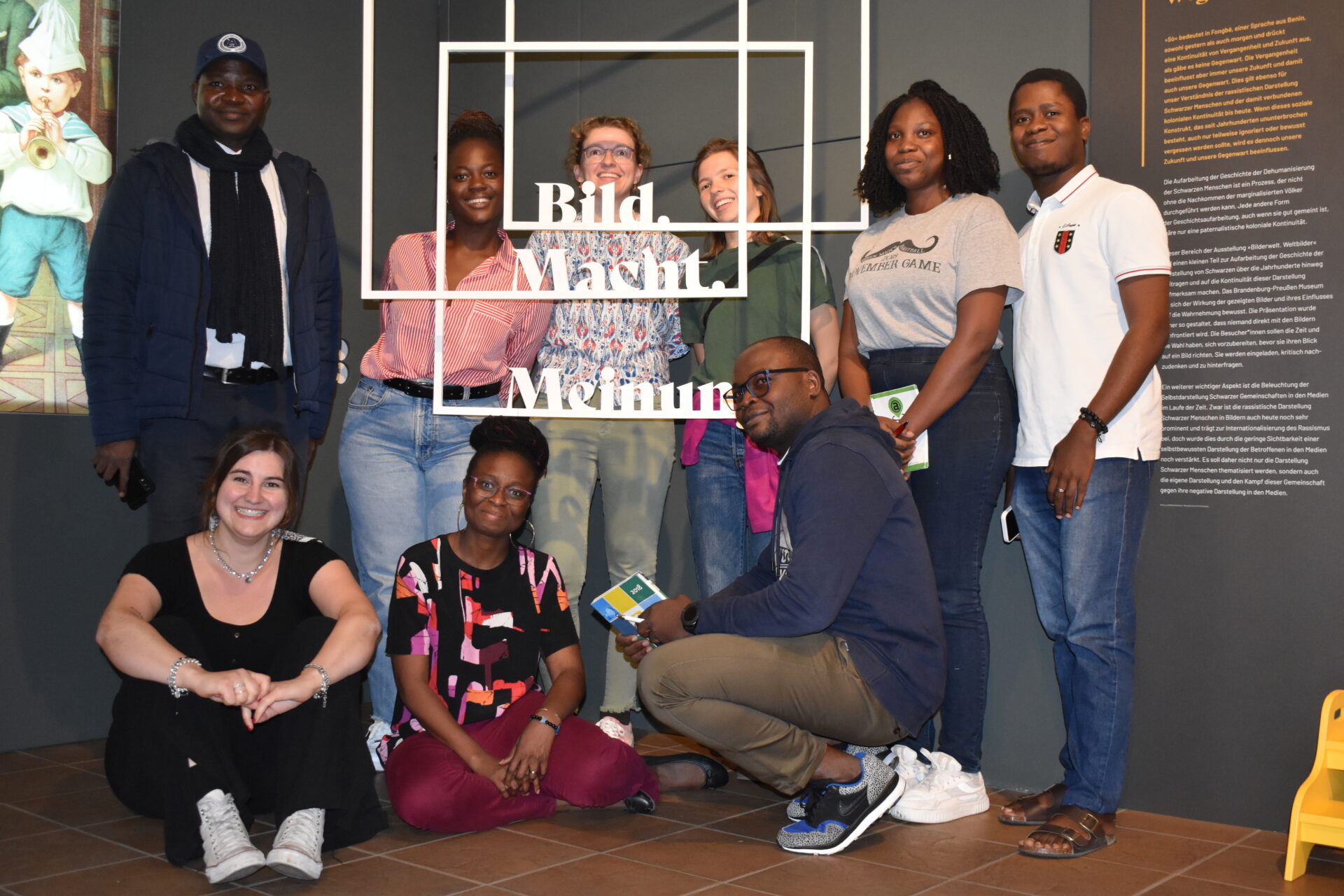
Day 2: Sightseeing in Berlin
The second day of our trip was all about sightseeing. We took a train to the main station and then sat next to the river Spree to have breakfast. Afterwards we started our discoveries in the government district: Walking by the Bundestag (Parliament) and all associated buildings with the offices from the deputies. The German parliament is one of the biggest in the world (especially compared to the total population) and has more than 700 members. Together with the Bundesrat (Federal Assembly) the Bundestag is the legislative branch in Germany. We used the chance to not only talk about the architecture of the building but also exchange about the political systems in Germany and Benin and what we know about them.
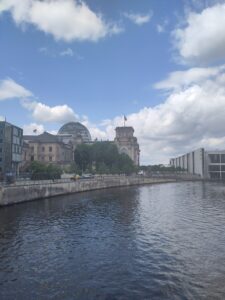
The next stop was the famous Brandenburg Gate which was built at the end of the 18th century and is a national symbol as well as one of the main landmarks in Berlin. As all the other tourists we used the chance for a little photo session before we continued our tour to the Memorial to the Murdered Jews of Europe. This monument was built about 10 years ago to remember the Jewish victims of the Holocaust during the Third Reich. Between 1939 and 1945 an estimated number of 6 million Jews were killed in the genocide by the Nazi Regime. At the memorial side we felt the heaviness and oppressive silence between the blocks of stone which resemble a graveyard. It was an opportunity to address the history of Germany and expand our knowledge by exchanging our thoughts.
Then we took a small break at the Museumsinsel. We decided to continue our tour and took a bus to the East Side Gallery. This is an open air memorial with a length of one kilometre that consists of about hundred paintings from artists from all over the world on the east side of what used to be the Berlin Wall. This wall was built to separate West Berlin from East Berlin and often referred to as the “Wall of Shame”. It was built in 1961 and demolished in 1989. At the time, Germany was divided into two parts: the German Democratic Republic (German: DDR) in the East and the Federal Republic of Germany (German: BRD) in the West. The wall divided the whole country in two parts on a length of 155 kilometres and constituted a strict border which was intended to prevent people from the East from entering the West.
The last stop of the day was Alexanderplatz, a public square and lively place with lots of department stores around. It also constitutes one of the mobility hubs of the city combining metro, train and tram services. More than 360,000 people visit the square every day that was named by the Russian Emperor Alexander I who visited the city in 1805. On the day of our visit there was an international food market where we could taste fresh juice, tacos, fried bananas and Zuckerwatte.
After this long day we all left Berlin with a lot of new impressions and food for thought but most of all with shared memories of a great trip as a team that we will never forget.
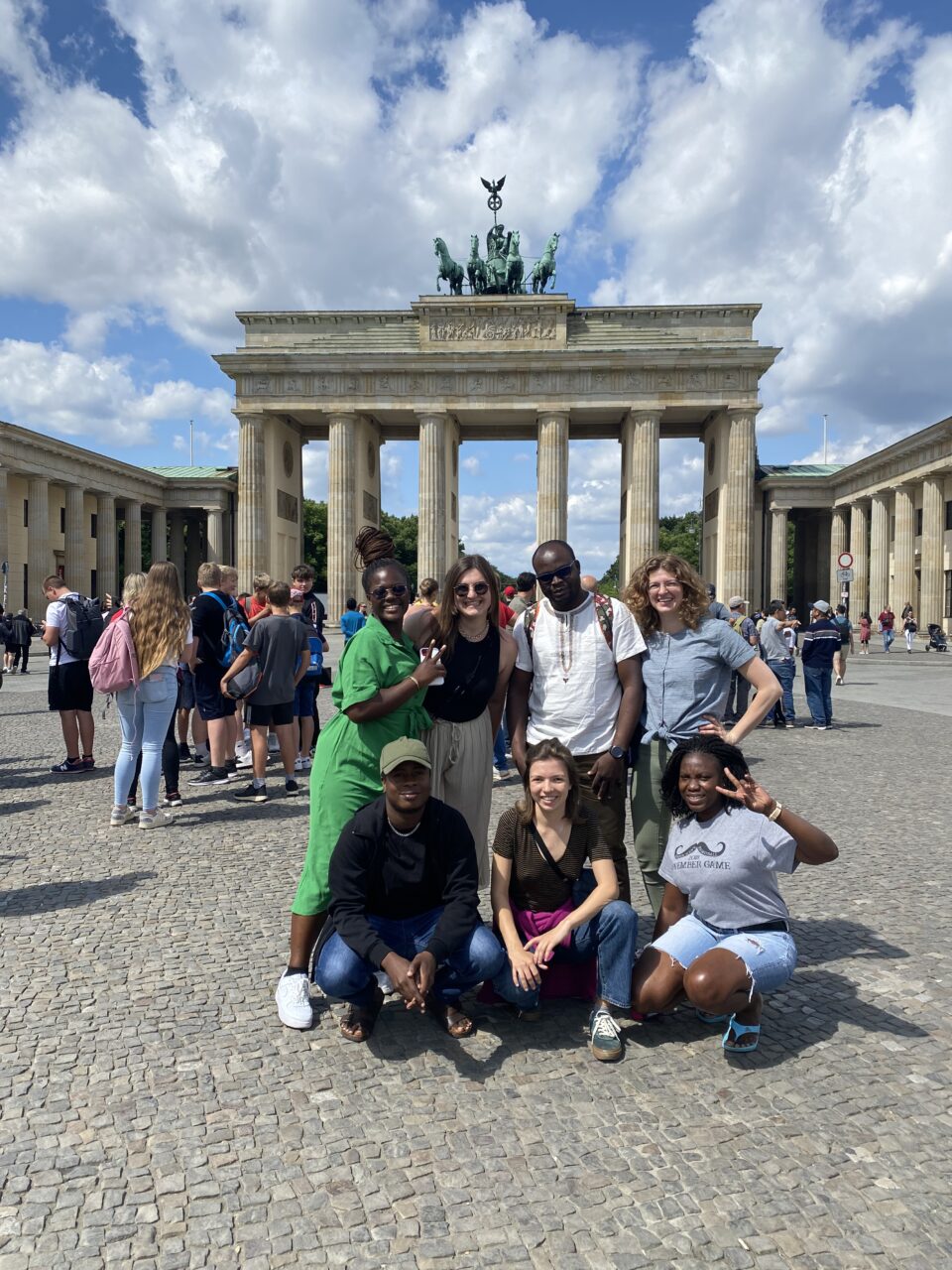
ASA team Black Academy 2023: Ann Kristin, Bella, Dylan, Ella, Gildas & Marie


